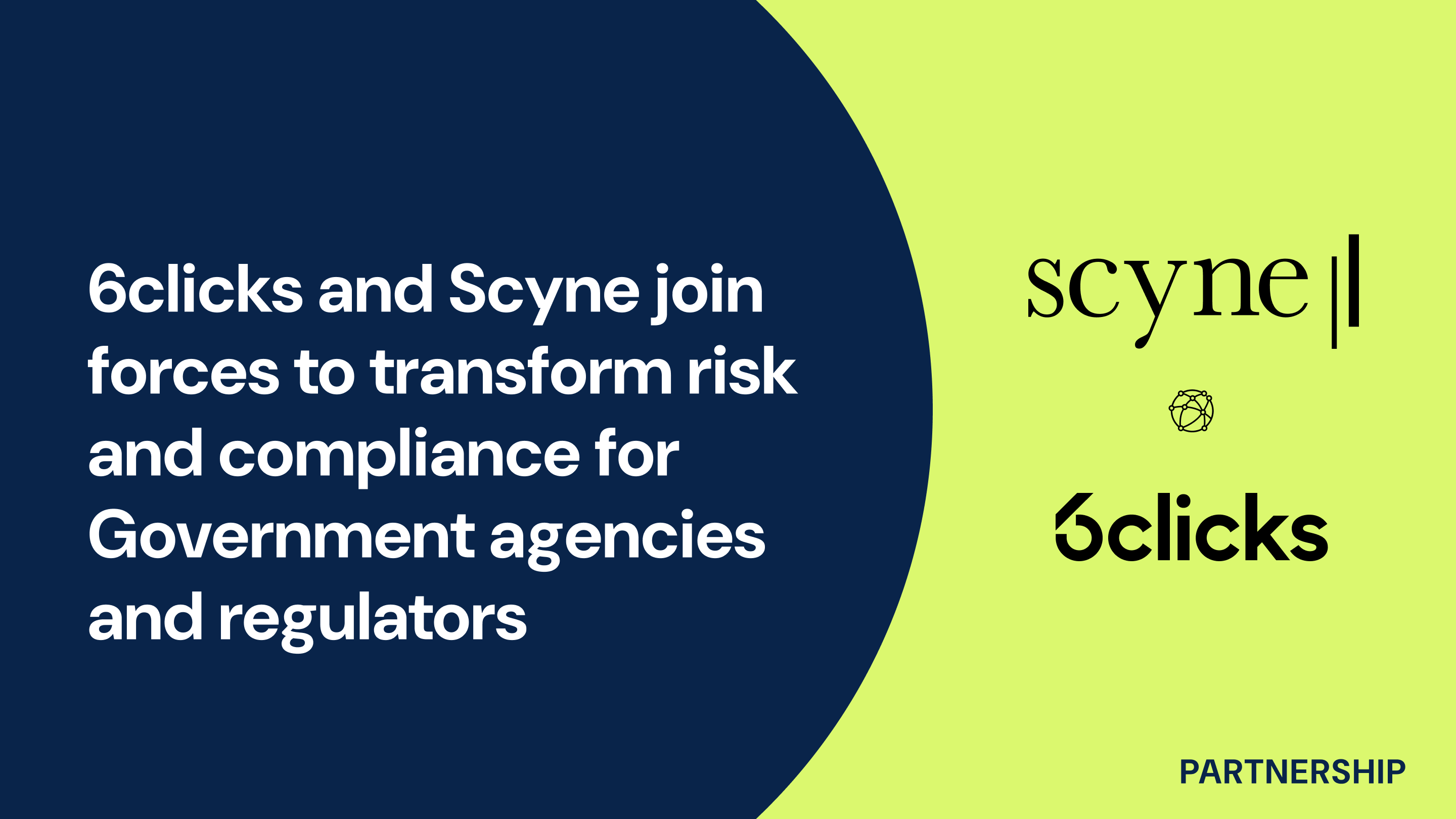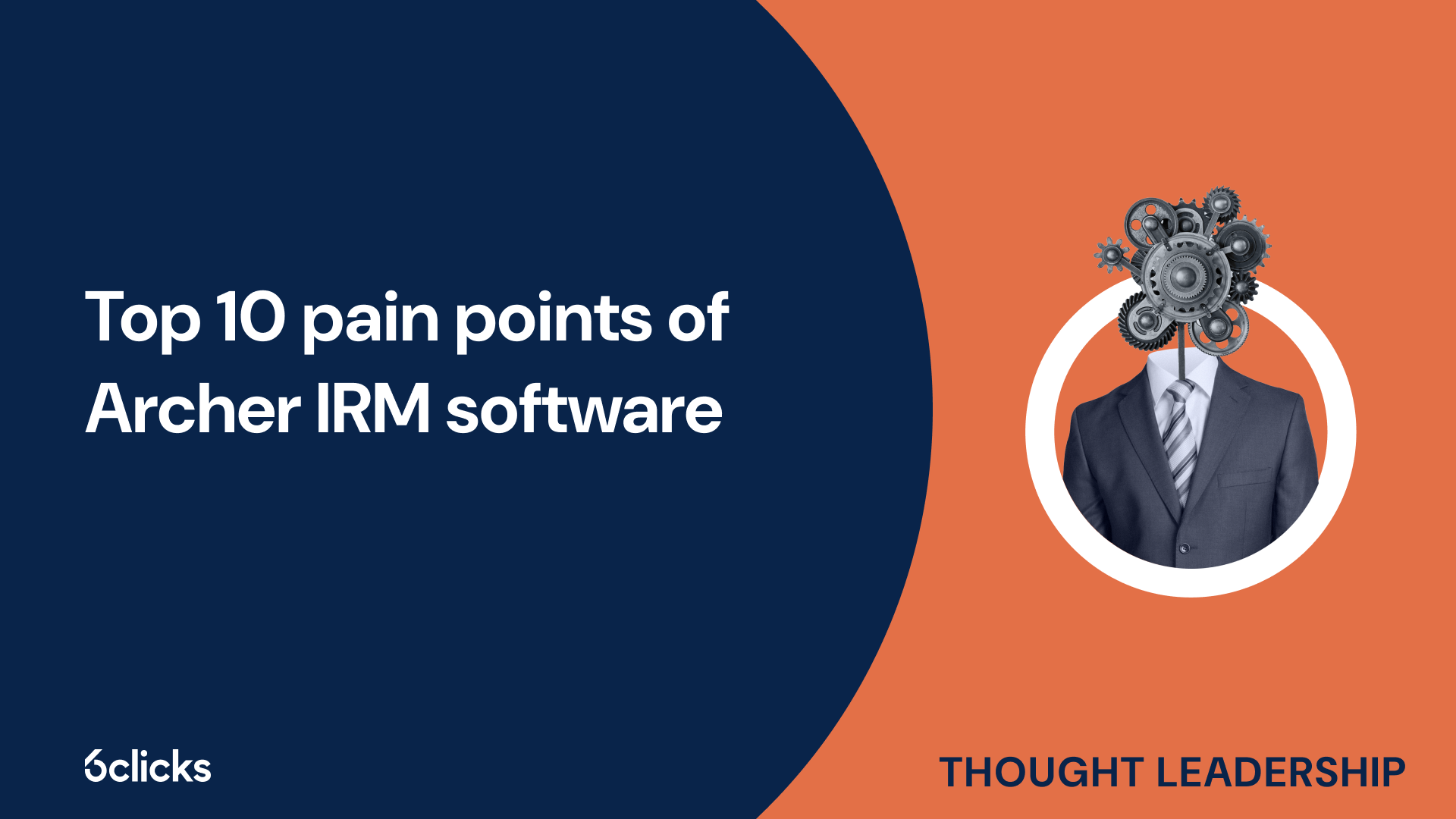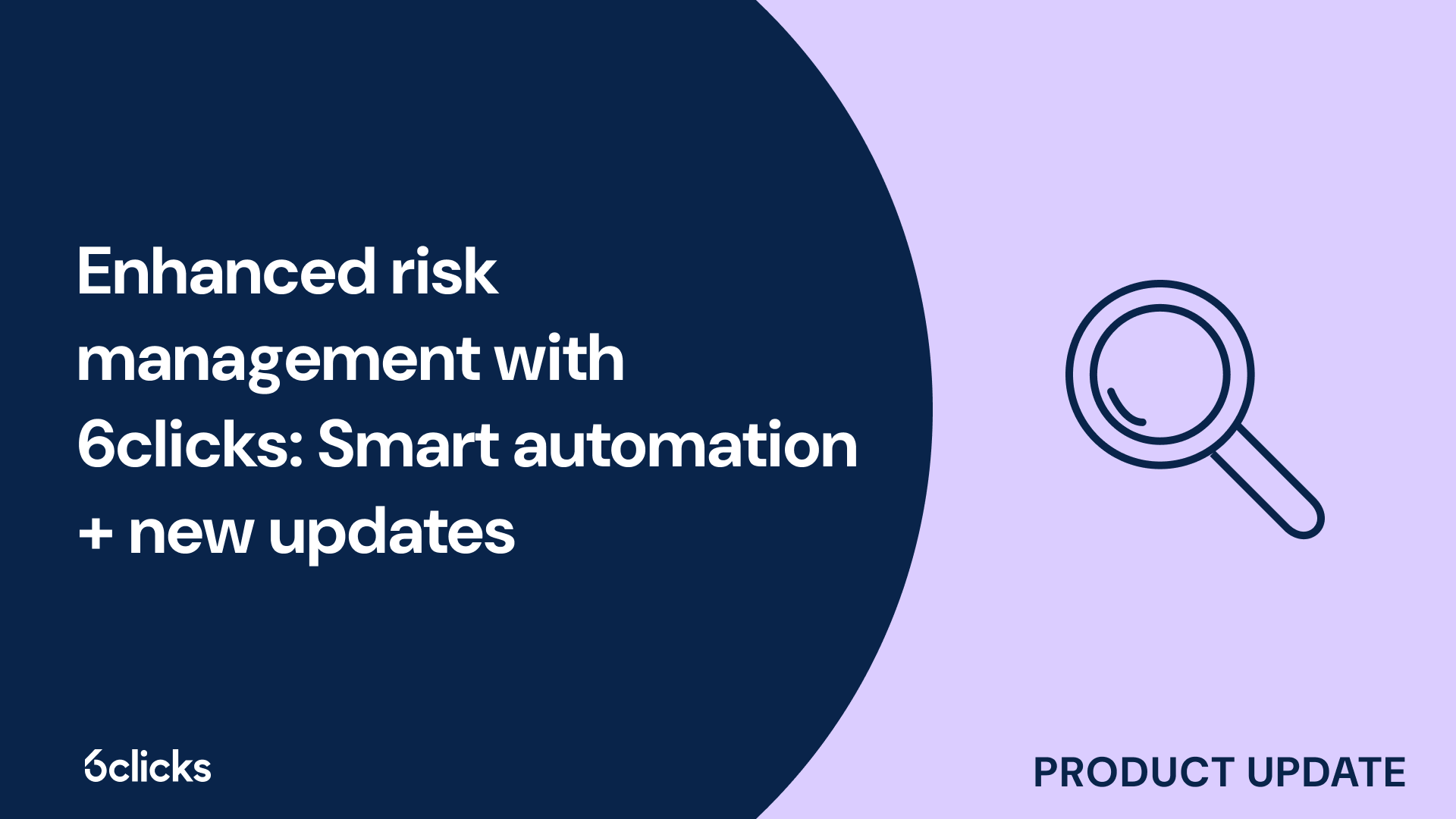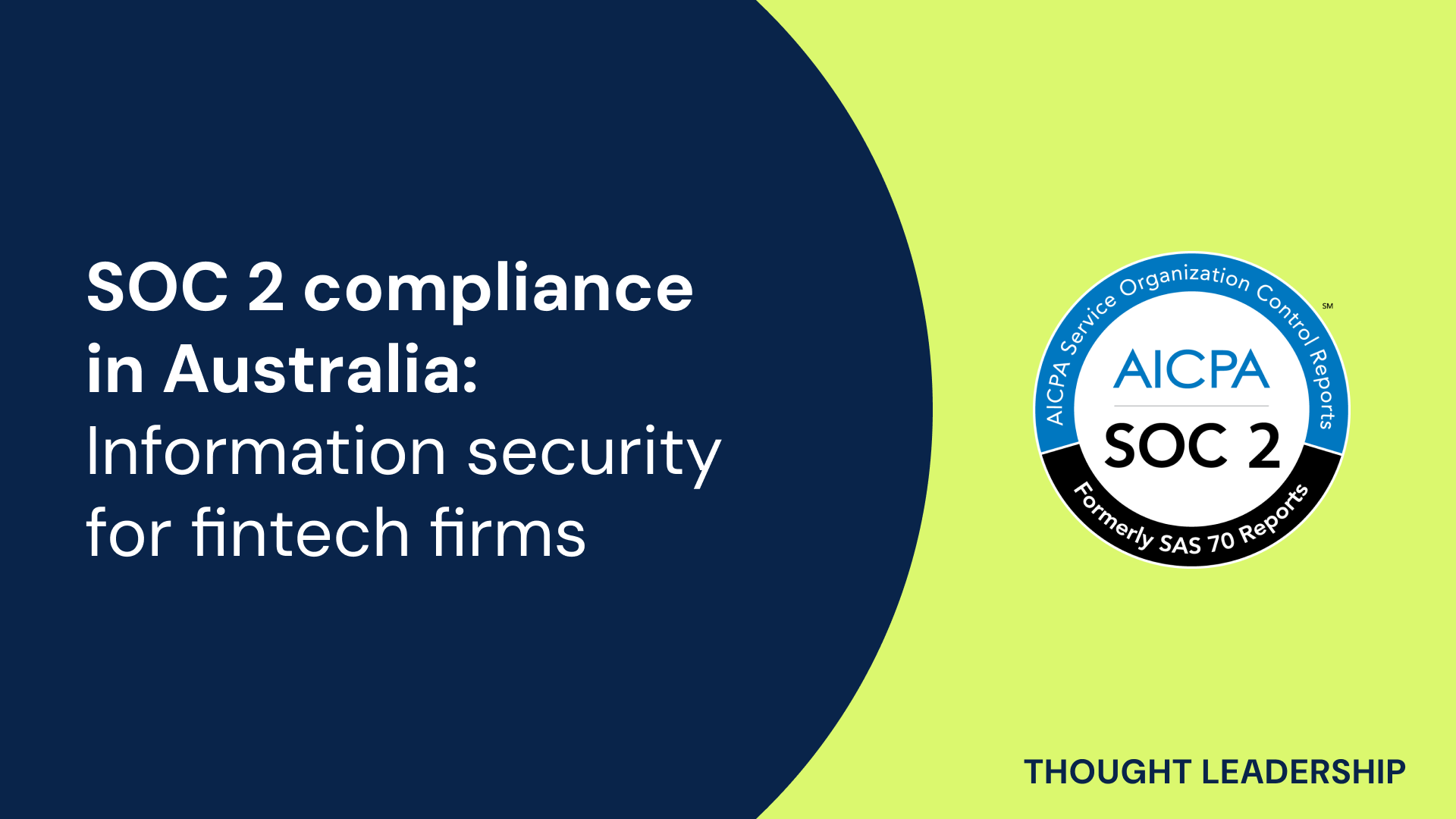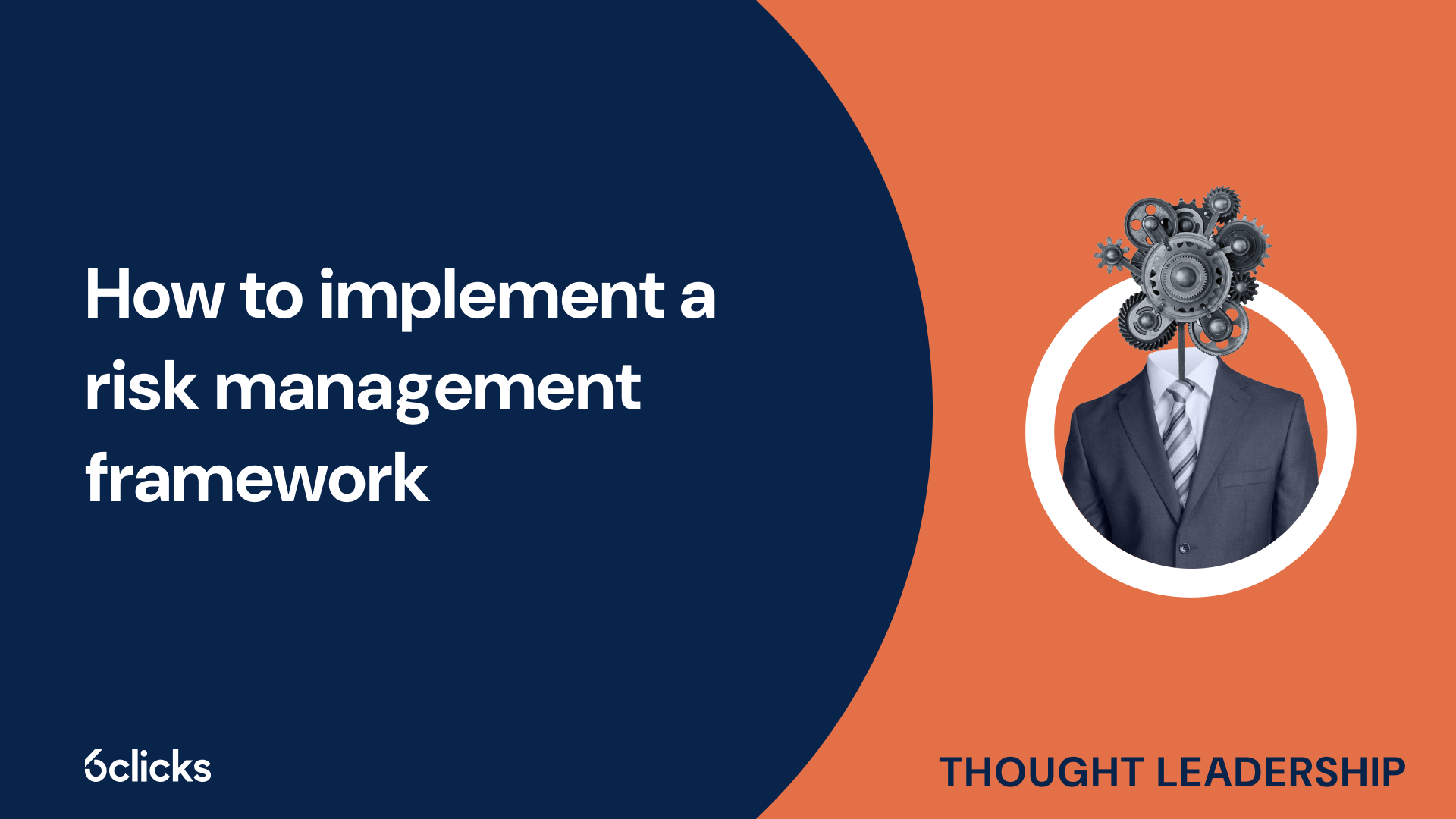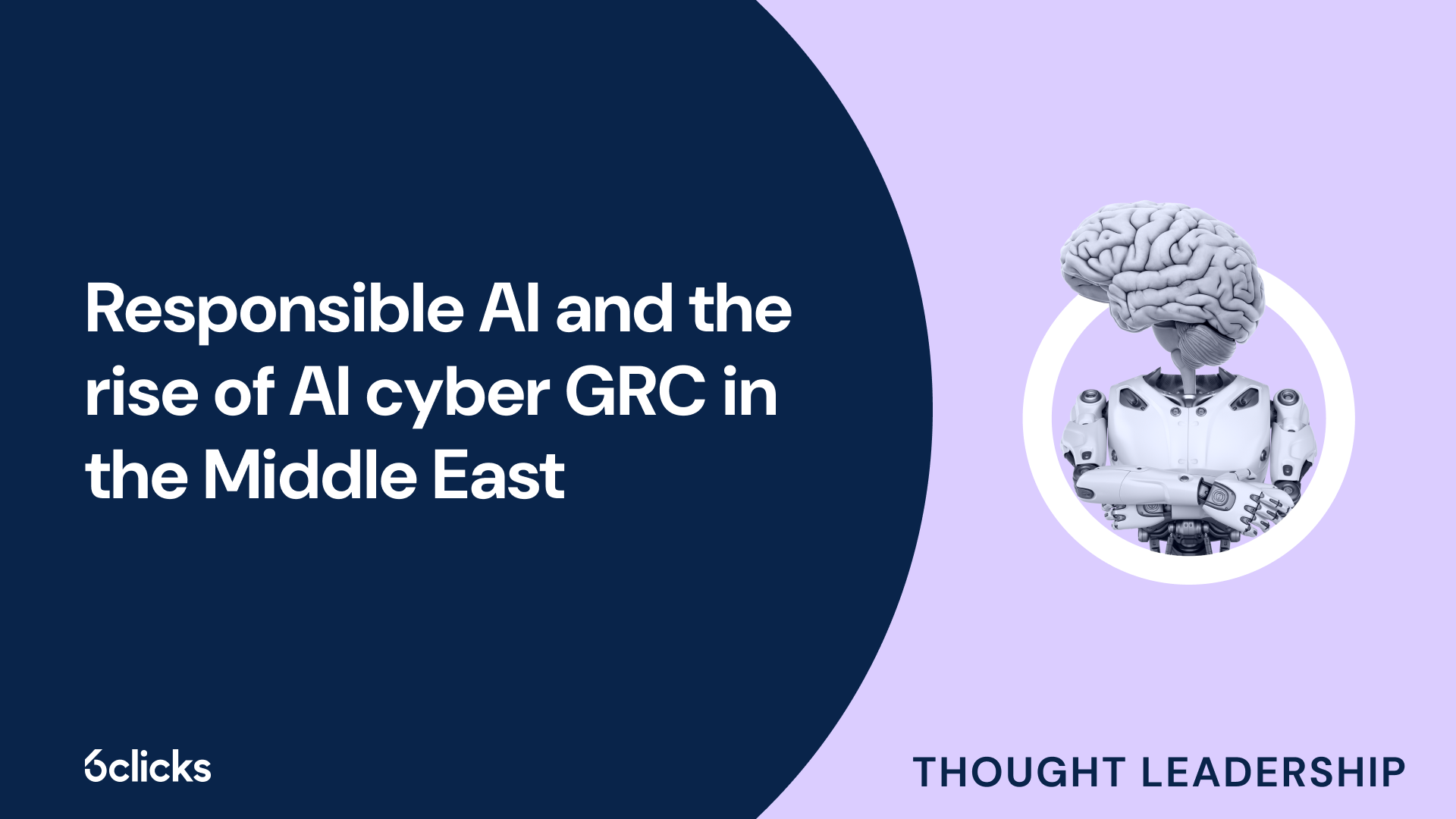The GRC buyer’s guide for 2025: Building resilience with AI-powered, federated solutions
Discover the ultimate GRC buyer's guide for 2025! Uncover how AI-powered, federated solutions transform compliance and security management for industries like government, aerospace, banking, and more. Learn about centralized control, continuous compliance, and advanced cyber GRC capabilities. Download now!
-1.png?width=200&height=249&name=Group%20193%20(1)-1.png)
The GRC buyer’s guide for 2025: Building resilience with AI-powered, federated solutions
What is governance, risk and compliance (GRC)?
Governance, Risk, and Compliance (GRC) is a structured approach that organizations use to align their business activities with their objectives and ensure compliance with regulatory requirements. It involves managing risks, establishing effective governance structures, and adhering to compliance requirements. In today's complex business landscape, where cyber risks and regulatory obligations are increasing, GRC has become an essential component of organizations' risk management strategies. By implementing a comprehensive GRC program, companies can proactively identify and manage potential risks, improve operational efficiency, and achieve their business goals while maintaining regulatory compliance. With the rise of digital transformation and the need for real-time risk data, GRC provides organizations with a single platform to streamline audit management, third-party risk management, and overall risk assessment. This enables effective governance, informed decision-making, and a risk-aware culture across all levels of the organization. By taking a proactive and comprehensive approach to governance, risk, and compliance, organizations can mitigate potential financial and security risks, reduce costs, and ensure principled performance in their business activities.
Why GRC is important right now?
GRC, or governance, risk, and compliance, has become increasingly important in today's business landscape. As organizations navigate an ever-changing regulatory environment, managing reputations, finances, and compliance has become paramount. A structured approach to GRC helps organizations protect their reputation by ensuring ethical and responsible practices, ultimately building trust with stakeholders.
Compliance with laws and regulations is crucial in safeguarding an organization's operations and finances. GRC enables organizations to stay up-to-date with regulatory requirements, reducing the risk of financial penalties and legal consequences. Failure to comply can have lasting negative effects on an organization's financial standing and reputation.
Beyond compliance, GRC offers several benefits for organizations. It improves operational efficiency by streamlining processes and providing a single platform for managing risk and compliance activities. This integration eliminates duplication of efforts and enhances collaboration across business units. By automating tasks and workflows, GRC reduces costs associated with manual processes, freeing up resources for strategic initiatives.
In the midst of a digital transformation, effective GRC is vital. It helps organizations identify and mitigate cyber risks that could compromise sensitive data and disrupt business operations. GRC also fosters a risk-aware culture by providing real-time risk data and indicators, enabling proactive decision-making to protect the organization.
Regulatory requirements
Regulatory requirements play a crucial role in guiding an organization's operations and ensuring compliance with laws and regulations. In today's complex business environment, organizations must navigate a wide range of regulatory frameworks that vary from industry to industry and across different regions. Compliance with these requirements is not only necessary to avoid financial penalties and legal consequences but also to maintain the trust of customers, stakeholders, and regulatory bodies. Understanding and adhering to regulatory requirements is essential for organizations to operate ethically, protect sensitive data, and mitigate potential risks. By implementing a robust governance, risk, and compliance (GRC) framework, organizations can effectively manage and monitor their compliance obligations, ensuring that they stay in alignment with regulatory guidelines and standards while also promoting operational excellence and principled performance.
Types of regulatory requirements
Organizations across various industries are subject to different types of regulatory requirements that they must comply with. These requirements are put in place to ensure that businesses operate in a responsible and ethical manner, and to protect the interests of consumers, employees, and the public.
Industry-specific regulations play a critical role in shaping the operations of businesses. For example, healthcare organizations must comply with regulations such as the Health Insurance Portability and Accountability Act (HIPAA), which ensures the privacy and security of patients' health information. Similarly, financial institutions are subject to regulations like the Sarbanes-Oxley Act (SOX) and the Dodd-Frank Act, which aim to improve corporate governance and protect investors.
Data privacy laws have gained significant importance in recent years. Regulations such as the European Union's General Data Protection Regulation (GDPR) and the California Consumer Privacy Act (CCPA) set out strict requirements for the collection, use, and protection of personal data. Organizations that handle sensitive information must adhere to these regulations to maintain trust with their customers and avoid penalties.
In addition to industry-specific and data privacy regulations, organizations must also consider cybersecurity frameworks to mitigate the risks of data breaches and cyberattacks. Frameworks such as the NIST Cybersecurity Framework and ISO 27001 provide guidelines for implementing effective cybersecurity controls and risk management practices.
It's important to note that regulatory requirements can vary by jurisdiction and industry. Different countries have their own sets of regulations, and even within the same country, industries may have specific requirements based on their unique characteristics. To ensure compliance, organizations must understand the regulations that apply to their industry and location and take the necessary steps to meet these requirements.
How GRC helps meet regulatory requirements
GRC, or governance, risk management, and compliance, plays a crucial role in helping organizations meet regulatory requirements. It encompasses a structured approach that enables businesses to effectively manage risks, adhere to proper accounting practices, and operate ethically.
Governance is the foundation of GRC, providing the framework for decision-making and accountability within an organization. It ensures that business activities align with regulatory requirements and helps establish a culture of compliance across all levels.
Risk management is another key component of GRC. It involves identifying potential risks and implementing processes to mitigate them. By proactively assessing risks, organizations can implement preventive measures and controls to ensure regulatory compliance. This helps to protect against financial risks, reputational damage, and non-compliance penalties.
Compliance management is the final pillar of GRC, ensuring that organizations meet regulatory obligations and adhere to relevant laws and regulations. It involves monitoring and reporting on compliance with regulatory requirements, such as proper financial accounting practices and data privacy regulations.
By integrating these capabilities, GRC strategies and structures help organizations identify potential threats, introduce protective processes, and ensure regulatory compliance. This comprehensive approach provides organizations with the ability to reliably achieve their objectives, address uncertainty, and act with integrity in today's complex regulatory landscape.
Challenges with meeting regulatory requirements
Meeting regulatory requirements in the context of governance, risk, and compliance (GRC) poses significant challenges for organizations. One of the main challenges is the complexity of the security compliance landscape. With a multitude of regulations and standards to comply with, organizations must navigate through a complex web of requirements, often with differing and overlapping directives. This complexity can be overwhelming and resource-intensive, requiring constant monitoring and interpretation of regulatory changes.
Another challenge is the ever-changing nature of regulatory requirements. Regulations are constantly evolving to keep up with emerging risks and technologies. Organizations must stay updated with the latest regulations applicable to their industry and ensure that their GRC processes are adapted accordingly. Failure to keep up with changing regulations can result in non-compliance, financial penalties, and reputational damage.
Furthermore, the risks associated with third-party vendors add another layer of complexity to regulatory compliance. Organizations rely on third-party vendors for various activities, such as IT infrastructure, data storage, and outsourced services. However, these vendors pose inherent risks, including data breaches, non-compliance, and operational disruption. Organizations must implement robust third-party risk management frameworks to ensure that vendors comply with regulatory requirements and adequately protect sensitive data.
Structured approach
In today's rapidly changing business landscape, organizations face a multitude of challenges and risks that can impact their operations and reputation. To navigate these complexities effectively, implementing a structured approach to governance, risk, and compliance (GRC) becomes essential. A structured approach ensures that organizations have a comprehensive and integrated framework to identify, assess, and manage risks, comply with regulatory requirements, and achieve their business objectives. By adopting a structured approach, organizations can gain better visibility into their risk landscape, establish a risk-aware culture, and align their risk management strategies with their overall business strategy. This approach also enables organizations to streamline their GRC processes, reduce costs associated with non-compliance, and enhance operational efficiency. With a structured and integrated approach to GRC, organizations can confidently navigate the changing regulatory landscape, mitigate potential risks, and achieve their business goals.
Benefits of a structured GRC approach
A structured GRC (Governance, Risk, and Compliance) approach is crucial for companies, especially in the current business landscape. By implementing an effective GRC program, companies can achieve principled performance, which is the alignment of business objectives with ethical values, laws, regulations, and the expectations of stakeholders.
One of the key benefits of a structured GRC approach is that it helps companies proactively manage risks and comply with regulatory requirements. GRC enables organizations to identify, assess, and mitigate potential risks, ensuring operational efficiency and minimizing financial and security risks. It provides a framework for addressing compliance requirements, protecting the organization from regulatory penalties and reputational damage.
Implementing GRC has numerous advantages for business executives, finance managers, legal counsels, and IT directors. It provides real-time risk data and reporting capabilities, enabling them to make informed strategic decisions. GRC streamlines business processes, improves business continuity, and reduces costs associated with penalties and audits. It also enhances collaboration between departments, promoting a risk-aware culture throughout the organization.
Before implementing GRC, it is essential to assess the organization's risks, policies, people, and controls. This assessment ensures that the GRC program is tailored to the specific needs and challenges of the organization. By understanding the areas of potential risk and control gaps, companies can design an effective GRC framework to address those gaps and achieve desired outcomes.
Building a structured GRC program
Building a structured GRC program involves following a systematic approach that incorporates the GRC Capability Model, also known as the Red Book, developed by OCEG (Open Compliance and Ethics Group). This model provides a framework for organizations to establish effective governance, risk management, and compliance practices.
The first step is to assess the organization's current GRC capabilities. This includes evaluating existing processes, controls, and technologies used for governance, risk management, and compliance. This assessment helps identify gaps and areas for improvement in the organization's GRC program.
Next, organizations should define their desired GRC outcomes and objectives. This involves setting clear goals and performance indicators that align with the organization's overall strategy and business objectives. By defining these objectives, organizations can develop a roadmap for implementing the GRC program.
Once the objectives are defined, organizations can design and implement the necessary processes, controls, and technologies to support their GRC program. This includes establishing policies and procedures, implementing risk assessment methodologies, and selecting and implementing GRC software solutions.
An essential aspect of a structured GRC program is data integration. Organizations should integrate data and information from internal departments and external organizations to gain a holistic view of their risks and compliance requirements. This allows for better decision-making and more effective risk management.
Proper training of all GRC system users is crucial for the success of the program. Users should be trained on how to effectively use the GRC software and understand their roles and responsibilities in the GRC process. Additionally, periodic testing of the GRC software should be conducted to ensure its functionality and reliability.
Ensuring consistency in the GRC program
Ensuring consistency in the GRC program is crucial for effective governance, risk management, and compliance. To achieve this, organizations need to follow key steps that promote consistency in program design, implementation, and execution.
The first step is to establish a clear framework and guidelines for the GRC program. This includes defining the objectives, scope, and governance structure of the program. By setting consistent standards and requirements, organizations can ensure that all stakeholders understand their roles and responsibilities.
Next, organizations should establish standardized processes and procedures for risk assessment, control implementation, and compliance monitoring. These processes should be consistently followed across the organization to ensure that all risks and compliance requirements are properly addressed.
Regular monitoring and feedback loops are essential to maintain consistency in the GRC program. This involves conducting periodic assessments and reviews to evaluate the effectiveness of the program. Feedback from stakeholders, such as employees and management, should be actively sought and used to identify areas for improvement and ensure continuous alignment with business objectives.
Effective communication channels are vital for maintaining consistency in the GRC program. Clear and consistent communication ensures that all stakeholders are well-informed about the program's objectives, changes, and expectations. This includes regular reporting on risk and compliance status, as well as providing opportunities for stakeholders to ask questions and provide input.
Business objectives
Business objectives form the foundation of any organization's success. They define the direction, goals, and targets that drive strategic decisions and shape business activities. In today's rapidly evolving business landscape, organizations face numerous challenges, from regulatory requirements and cyber risks to operational efficiency and digital transformation. To navigate these challenges effectively, organizations must adopt a structured approach to governance, risk, and compliance (GRC). GRC helps organizations align their business objectives with risk management strategies, ensuring that potential risks are identified and managed proactively. By implementing a comprehensive GRC program, organizations can enhance their ability to meet compliance requirements, reduce costs, improve operational efficiency, and protect against financial and security risks. Moreover, GRC enables organizations to integrate risk management into their business processes and foster a risk-aware culture throughout the organization. With real-time risk data and reporting capabilities, GRC empowers business executives and management teams to make informed decisions that align with both their business goals and regulatory obligations. In summary, GRC has become increasingly important in today's business landscape, enabling organizations to effectively manage risks, drive principled performance, and achieve their business objectives.
Aligning GRC with business goals and objectives
Aligning GRC (Governance, Risk, and Compliance) with business goals and objectives is crucial in ensuring that organizations effectively manage and mitigate risks while driving their strategic initiatives. By incorporating the specific goals and objectives of the organization, GRC strategies can be tailored to meet the unique needs of the business.
Understanding the business goals and how they relate to risk and compliance management is essential for several reasons. Firstly, it allows organizations to prioritize and allocate resources effectively. By aligning GRC efforts with business goals, organizations can focus on the key risk areas and compliance requirements that directly impact the achievement of these goals.
Secondly, aligning GRC with business goals fosters a risk-aware culture throughout the organization. When employees understand the connection between their day-to-day activities and the broader organizational objectives, they are more likely to proactively identify and manage risks.
Furthermore, aligning GRC with business goals provides a structured approach to governance, risk management, and compliance. It allows organizations to integrate risk management into their business processes, enabling a proactive and strategic approach to risk mitigation.
Using GRC to achieve operational efficiency
Using GRC (Governance, Risk, and Compliance) to achieve operational efficiency is crucial for organizations in today's dynamic business environment. By streamlining risk management and compliance processes in line with business goals and objectives, organizations can optimize their operations and enhance overall performance.
GRC provides a structured approach to integrating risk management and compliance into business processes. By aligning these processes with business goals, organizations can identify and prioritize key risk areas and compliance requirements that directly impact the achievement of their objectives. This enables focused resource allocation and efficient risk mitigation strategies.
Another important aspect of using GRC to achieve operational efficiency is the continuous evaluation and improvement of the implementation. By regularly reviewing and assessing the effectiveness of GRC initiatives, organizations can identify areas for enhancement and make necessary adjustments. This ensures that GRC activities remain aligned with changing business objectives and evolving regulatory requirements.
Implementing GRC initiatives in line with business goals not only enhances operational efficiency but also fosters a risk-aware culture throughout the organization. When employees understand the connection between their daily activities and the broader organizational objectives, they are more likely to proactively identify and manage risks, contributing to improved overall performance.
Identifying areas for improvement through GRC analysis
GRC analysis plays a crucial role in identifying areas for improvement within an organization. It involves a comprehensive evaluation of the organization's risks, policies, people, and controls to ensure effective compliance and risk management.
To begin the process, organizations must have a well-defined GRC framework in place. This framework encompasses company processes and people, ensuring that all stakeholders understand their roles and responsibilities in achieving compliance and managing risks. This includes establishing clear policies and procedures, allocating resources, and implementing control measures.
Once the framework is established, GRC analysis involves the careful examination of data and information gathered from various sources. This includes conducting risk assessments, evaluating policy compliance, and assessing the effectiveness of control measures. By analyzing this data, organizations can identify gaps and weaknesses in their current GRC practices.
The insights gained from GRC analysis provide organizations with the knowledge needed to make improvements. This can involve updating policies and procedures, enhancing control measures, providing additional training to employees, or strengthening overall risk management practices. By continuously analyzing GRC data and making necessary adjustments, organizations can ensure that their compliance and risk management efforts remain aligned with their strategic objectives.
Using data insights for strategic decision making
Using data insights is crucial for strategic decision making in today's complex business environment. With the increasing volume and velocity of data, organizations need to leverage technology-enabled GRC integration to effectively analyze and share data across the enterprise. This integration provides a comprehensive and real-time view of the organization's risk landscape, enabling better decision making.
By integrating data from various sources such as regulatory requirements, compliance team reports, and risk assessments, organizations can identify trends, patterns, and potential risks. These insights help in aligning management activities with business strategy and performance. With a holistic view of risks and compliance status, boards and executives can make informed decisions that prioritize the allocation of resources and ensure the organization's long-term sustainability.
Furthermore, technology-enabled GRC integration enhances reporting capabilities, providing timely and accurate information to boards and executives. This enables them to assess the effectiveness of risk management strategies, identify gaps, and make necessary adjustments to achieve desired outcomes.



